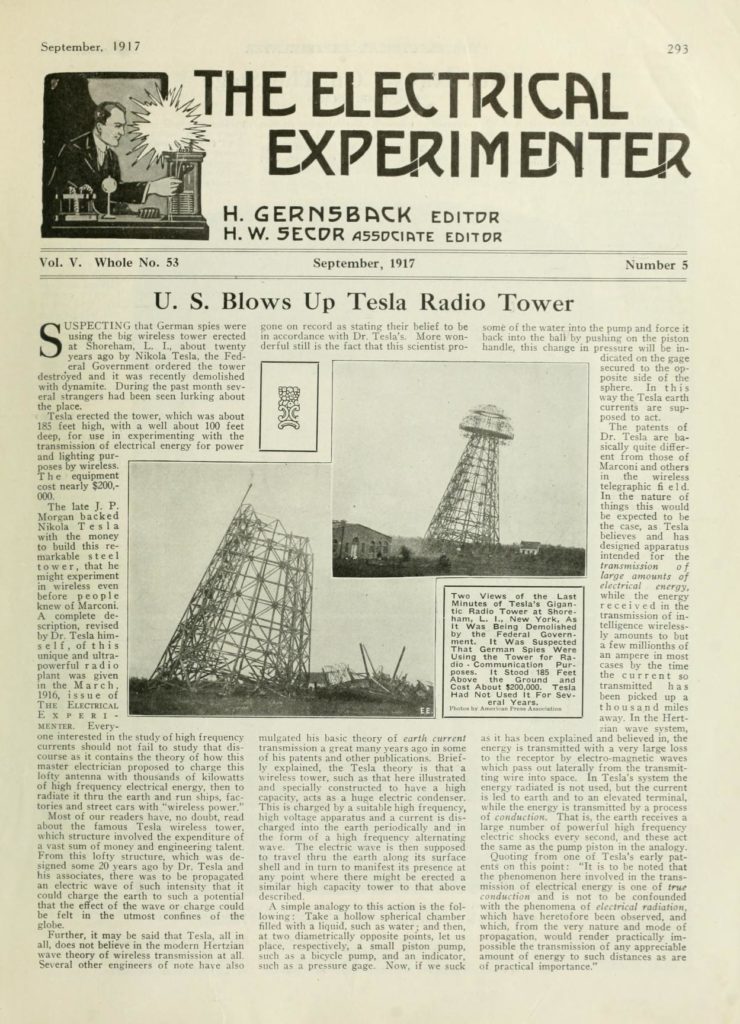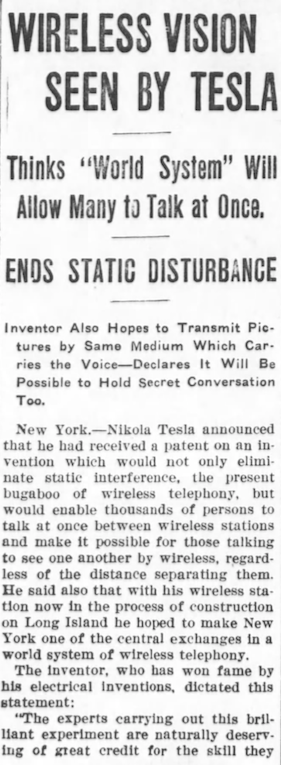
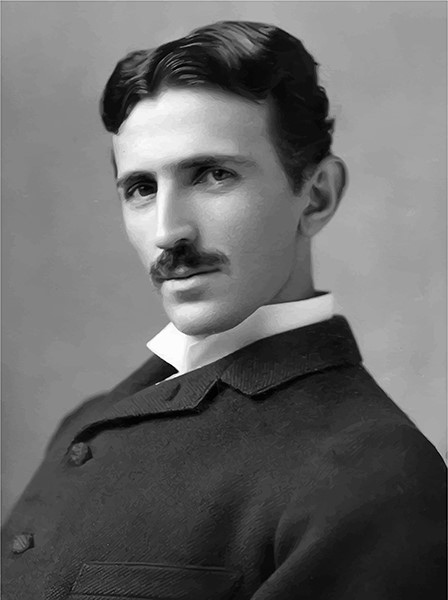
Excerpt from The New York Times
Oct. 3rd 1915
In his lifetime, Nikola Tesla was overshadowed, and even undermined, by his peers in the field we now refer to as STEM. His creations and theories, however, have endured beyond the twentieth century to significantly influence our modern methods of telecommunication, while his legacy of sensational experiments has come to epitomize what it means to be an innovator in the minds of many around the world. Through his ingenuity, and mastery of the alternating current, Tesla was crucial to ushering in the age of electricity. His advances in power transmission revolutionized the public’s accessibility to energy, light and heat, and paved the way for a host of life-altering conveniences we now take for granted.
Though he recognized the significance of his work, and the great technological strides he was making, Tesla never became complacent in his achievements. His AC motors fed into the development of the powerful Tesla coils, which in turn were the catalyst for his breakthroughs in artificial illumination and X-rays. Those experiments would then spurn him on to his loftiest of aspirations: the wireless transmission of information and power.
While this grand goal ultimately eluded Tesla, his total body of work and overall vision of technological progress is remarkable nonetheless. In the same vein as Jules Verne in the generation before him, and George Orwell in the generation after, Nikola Tesla possessed such a prescient mind that he seemed to know the future. To theorize, and nearly implement, a global wireless network over 100 years ago is an astounding feat, and leaves little wonder as to why so many people have been captivated by his accomplishments.
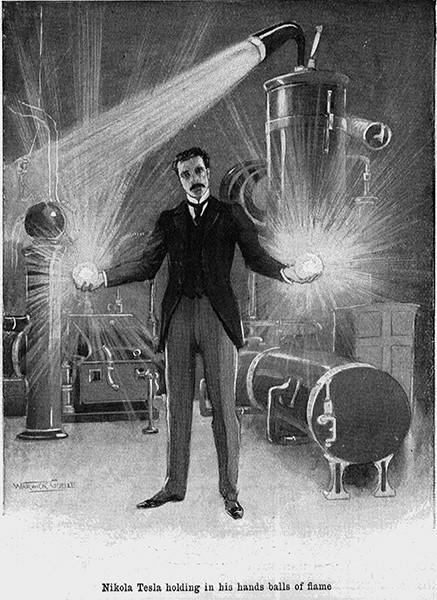
It should come as no surprise that scientific endeavors tend to take place in a laboratory, but what is not as well-known is the fact that Tesla’s sole surviving facility is here in New York. Erected near the Atlantic Ocean because of the proximity to England for transmission tests, Wardenclyffe was designed by prominent architect Stanford White (who is also responsible for the Washington Square Arch) and financed by banker J.P. Morgan. Situated 50 miles East of Manhattan, the brick structure was completed in the early years of the twentieth century.
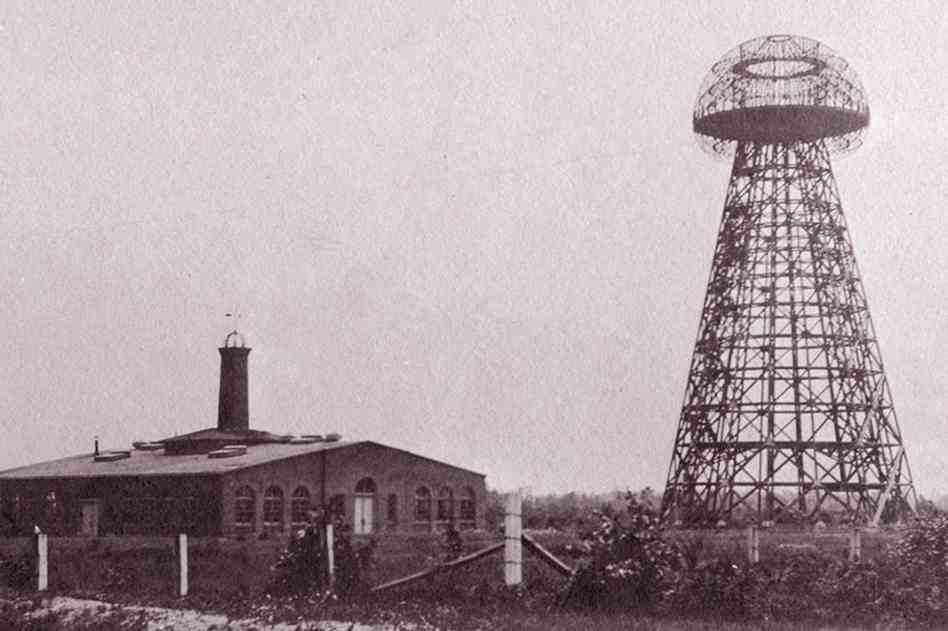
The Tower at Wardenclyffe was a literal apex of Tesla’s imagination and engineering prowess. Though he had achieved success and numerous patents addressing radio wave transmissions, he was not satisfied with mere wireless communication, and became increasingly focused on developing a means of relaying usable electrical power through the atmosphere. This obsession of sorts unfortunately led to Tesla’s professional downfall. Instead of continuing his progress on telecommunications, his affinity for wireless power caused funding to dry up and in only a few short years the laboratory and tower were vacated.
Though Wardenclyffe was abandoned and neglected for much of the previous century, it has been given a second life as the Tesla Science Center in recent years, and the site earned entry into the National Register of Historic Places in 2018. As a not-for-profit organization, the Center’s mission is to serve as both a museum and practical teaching environment. By preserving the laboratory and legacy of Nikola Tesla, while also hosting local scholastic physics competitions, guest lecturers and community events, the Center honors the historical contributions of its namesake as it strives to enrich the education and development of future generations.
Wireless World System
“As soon as completed, it will be possible for a business man in New York to dictate instructions, and have them instantly appear in type at his office in London or elsewhere. He will be able to call up, from his desk, and talk to any telephone subscriber on the globe, without any change whatever in the existing equipment. An inexpensive instrument, not bigger than a watch, will enable its bearer to hear anywhere, on sea or land, music or song, the speech of a political leader, the address of an eminent man of science, or the sermon of an eloquent clergyman, delivered in some other place, however distant. In the same manner any picture, character, drawing or print can be transferred from one to another place. Millions of such instruments can be operated from but one plant of this kind.”
– Nikola Tesla c. 1901
Believing he could tap into the resonant frequencies and conductivity of the Earth itself, Tesla envisioned a system which could relay energy in a myriad of forms around the globe using highly elevated transmission and reception towers. This “cloud” of wireless signals could serve as the conduit for text, images, audio, video and even electrical power for motors or light bulbs, according to his theories. While the funding and feasibility of putting such a network into practice did not materialize before his death in 1943, unfettered access to data and reliable energy is a brass ring we still have not completely reached. Poor wifi reception, drained batteries, dropped calls, broken chargers and network dead-zones are all modern symptoms of the same problem Tesla was attempting to resolve those many decades ago. What thoughts might cross his mind if he were to interact with our latest smart phones? Would he marvel at the quantity of content available? The speed with which he could access it all? Would he be impressed by our “wireless” charging pads or the ability to exchange battery power by simply holding two compatible phones adjacent to each other?
Though the potential of his experimentation was never fully realized, Tesla’s concept of a ‘Wireless World System’ serves both as a rudimentary precursor to our current global networking capabilities, and also as an advancement in technology still worth striving for.
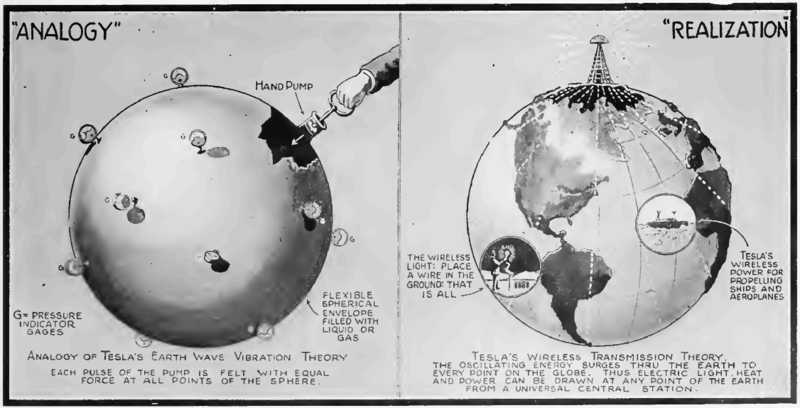
References:
https://www.nytimes.com/1915/10/03/archives/nikola-tesla-sees-a-wireless-vision-thinks-his-world-system-will.html
https://www.smithsonianmag.com/history/the-rise-and-fall-of-nikola-tesla-and-his-tower-11074324/?no-ist
https://archive.org/details/n5electricalexperi05gern/page/293
https://teslasciencecenter.org/
